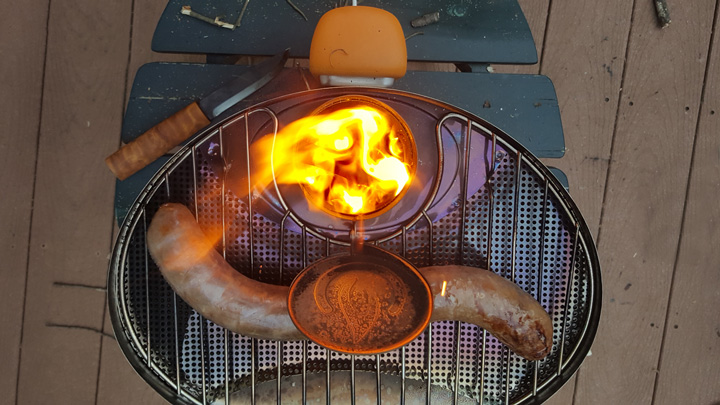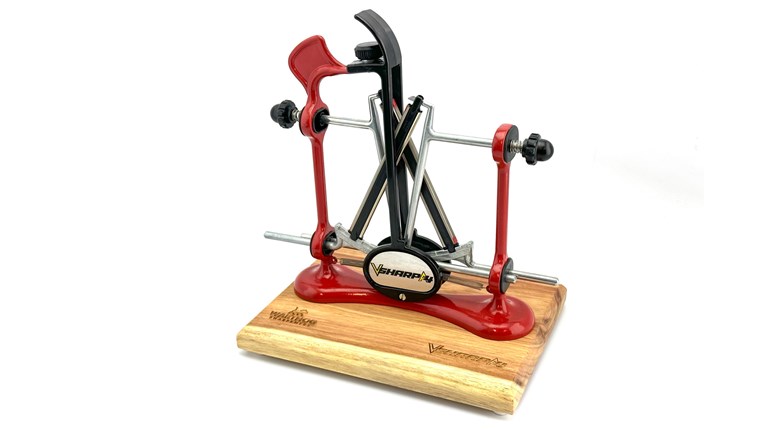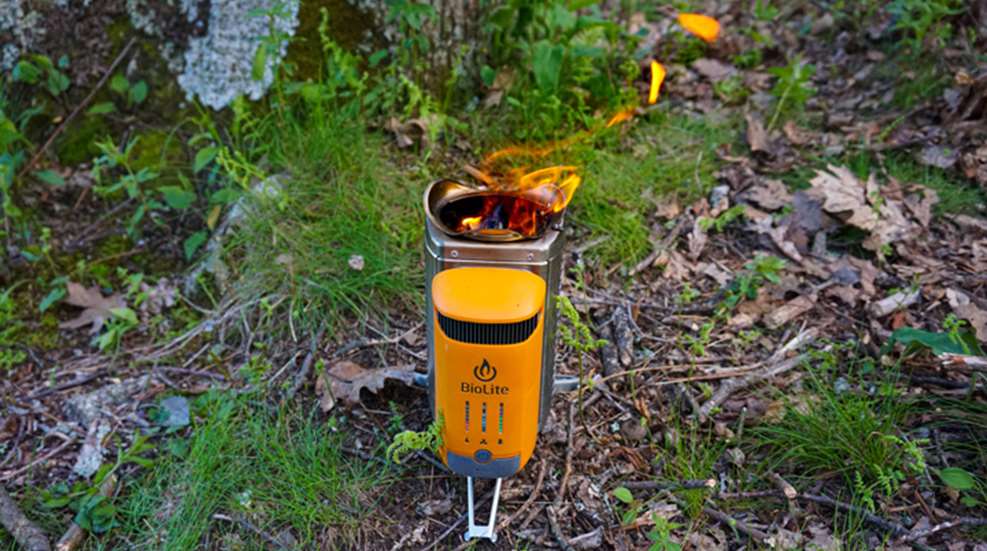
Looking for a way to conveniently power your next backcountry hunting trip? The BioLite CampStove 2 offers a versatile, portable and altogether efficient solution for the discerning hunter. With a variety of accessories, depending on preference or style of trip, the CampStove 2 initially appears to be nothing more than a conventional woodburning stove. Its semi-cylindrical main section is packed with vent holes, and a trio of wide-splay legs fold out from the bottom for support. The large, multi-purpose battery displaying the company’s name and logo, however, which clips onto the stove’s sole flat side, suggest that its uses do not end with the cooking of food.
Cooking on a CampStove 2
While this stove’s secondary uses are certainly the most intriguing thing about the it, the fact is, unless it can efficiently fulfill its purpose as a food cooker, it’s pretty much useless. As such, let’s begin with how well the CampStove 2 serves as—well—a stove.
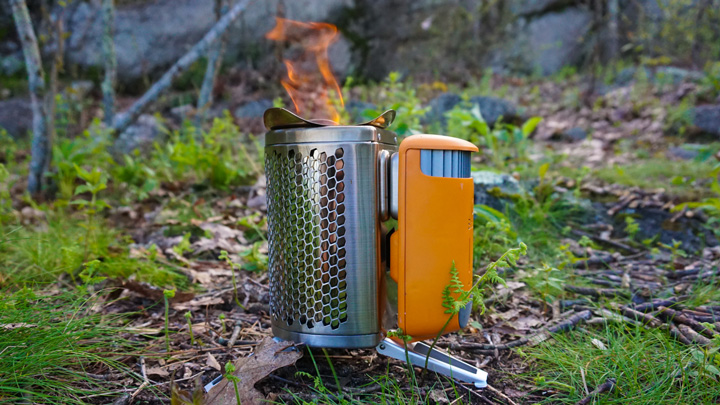
As a long-time aficionado of wood-burning camping stoves, I was immediately impressed with the CampStove 2’s design. A wide section of honey-combed metal protects the stove’s burn chamber, while four sets of small vent holes ring the interior of said section; one ring at the bottom, one in the middle and two positioned closer together at the top. This amount of well-spaced venting promised to provide the fire with enough oxygen for a hot flame, though I was surprised at its lack of ventilation underneath. Rather than having the fuel placed on a grate, or other such platform, the CampStove 2 seemed to rely solely on the ring of small vent holes to feed oxygen to the bottom of the fire. While I wondered if this would be enough for a quick startup, I remained optimistic that the CampStove 2 would turn in a fiery performance. As it turns out, my optimism was not misplaced.
One of the few things I dock the CampStove 2 on, is it’s rather difficult to load and light in comparison to other woodburning stoves. My go-to stove, for instance, the Solo Stove Lite, boasts a wide-diameter cylinder with a dedicated section cut out of its cup/pot stand, for the easy loading of tinder. The CampStove 2, on the other hand, has no such slot, and cuts a narrower, taller profile. That said, loading is certainly not impossible, and I shortly had a fire burning, starting with a little petroleum-impregnated cotton, and building it through successive layers of leaves, twigs and sticks. A little on the smoky side, I quickly realized I had built it past the upper vent holes (a no-no, as you’ll see in the directions), and so worked it down to the requisite level. Here’s where the fun part began.
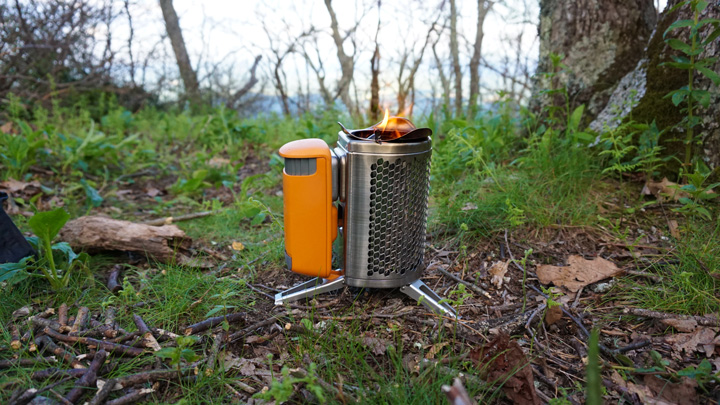
The primary function of that big orange battery on the side of the stove is as a fan. With its ingress near the top, and its exhaust port lining up with an identical hole in the side of the stove, the fan is intended to be activated 10 seconds after your fire starts, though if you forget, it will automatically trigger onto its lowest speed when the temperature gets high enough. This causes a supercharging effect, as the stove’s fan port leads directly to the vent holes, through which it pushes massive amounts of air to feed the fire.
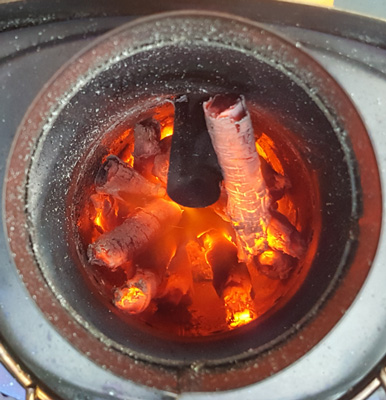
Once that fan kicked on, the stove immediately transformed from a general wood burner, which often takes practice, familiarity and a good bit of stoking to achieve a consistent flame, into something almost more akin to a gas grill. No, the flames weren’t blue, but their strength and consistency were absolutely unparalleled from a wood-burning platform, particularly for a first-time user. The smoke also disappeared, burning off before ever escaping the fire, though its pleasant aroma lingered around my ridgeline campsite. That fan, by the way, has four speeds, meaning as your fire stabilizes, you can cause it to burn faster and hotter with the push of a button. It took me just over five minutes to boil a half-liter of water at my 4,000-foot campsite, so I do not doubt BioLite’s assertion that the stove can boil a full liter in 4.5 minutes, given a more experienced hand. While I would love a little more space between where the pot sits and the mouth of the stove, so the fire can be more easily fed (and actually ended up improvising such a setup later on), the fact is with such a short boil time, you’ll barely even need to think about feeding it once it’s going, particularly if only cooking for one. As a stove, therefore, the CampStove 2 hits it out of the park, and we haven’t even gotten to the accessories.
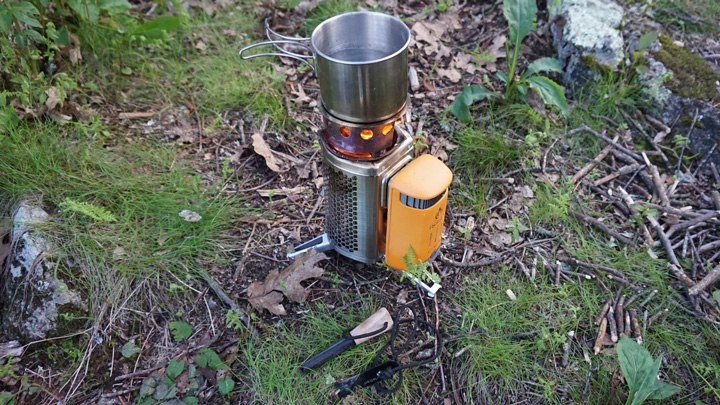
The CampStove 2 as a Battery Pack
Tech geeks rejoice—we have reached the part you’ve been waiting for (and if you skipped down here, be sure to go back above and read about the fan system once you’re done). The CampStove 2 owes its ingenious oxygen-delivery system to a thick piece of metal that juts out from the battery and into the stove at an angle. Right in the path of the flames, this “pickup” catches waste heat and sends it to a thermoelectric generator within the battery pack. This, in turn, spins the fan, sending air back to the fire to create more heat, while sending the rest of the power to be stored in a battery. This battery can be utilized via a USB port, to charge a cell phone, camera or other such device. It can also power a small LED light—included with the stove. No mere gimmick, this is a 2600 mAh battery, which is around the size of an average power bank. While this won’t fully charge all smartphones (whose batteries average 3000-3500 mAh), its field-based rechargeability means it really doesn’t need to, as you’ll be replenishing the battery during your next meal. Charging is best accomplished by plugging your device in after mealtime, as similar to a standard battery pack, the USB connection will take a while to recharge your device. That said, charging can also be done in real time as your fire burns. USB output is three watts, and a fire of around two hours is required to fully charge the BioLite's battery from nothing (though personally, my battery rarely dips below a quarter charge when on the trail).
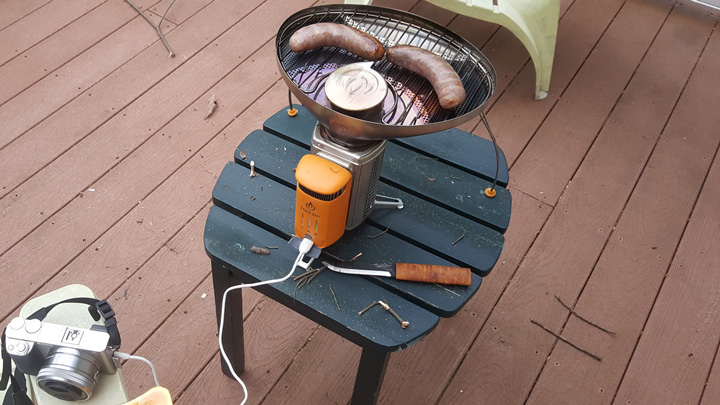
On the stove’s front, in between the fan’s inlet and the power button, sit three columns of labeled and graduated LEDs. The left-most line indicates flame heat (or charging speed, as the two correlate directly), the middle shows fan speed (adjustable by clicking the power button), while the rightmost indicates battery charge. This makes it quick and easy to determine what is going on inside your stove. Underneath all this toward the battery’s bottom, resides the fully covered USB port.
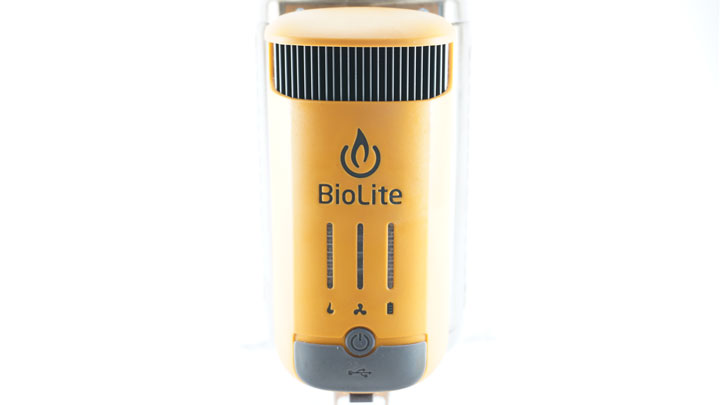
Packability
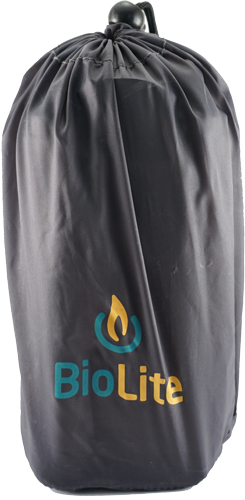
Every great product seemingly comes with a cost, of course, and for the CampStove 2 it is weight. While I almost feel bad listing this as a drawback, considering it’s an unavoidable hurdle given current technologies, there’s no getting around the fact that the stove weighs 2.06 lbs. While this may not sound like much, consider that the average small wood-burner weighs somewhere south of a pound. That said, only those fanatically concerned with their baseweight will disregard the stove on this quality alone, as the power bank or two it allows you to ditch, combined with the removal of your old stove, means weight will just about break even in the end. Further, the battery pack clips off when the legs are folded and can be nested into the center of the stove, meaning it takes up no more pack space than a 32-ounce wide-mouth water bottle.
Accessories
If you’re the type who is not as concerned with weight, you’re out hunting with some friends, or car camping, the CampStove 2 gets even better. With a full range of accessories to choose from, the CampStove 2 is available with a kettle pot, a coffee press and my personal favorite, a portable grill. The covered kettle pot fits snugly on top, boiling water with ease, while the portable grill fits down onto the stove’s mouth, using two foldout legs for support. The grill is constructed in such a way that the flames, particularly with the fan on high, reach all the way to the grill grate, giving meat that seared texture most have come to know and love—perfect for some deer burgers or sliced-up backstrap. Even better, the grill sports a chimney flap, meaning the fire can easily be fed while cooking to keep the grilling going. It weighs in at 1.88 pounds.
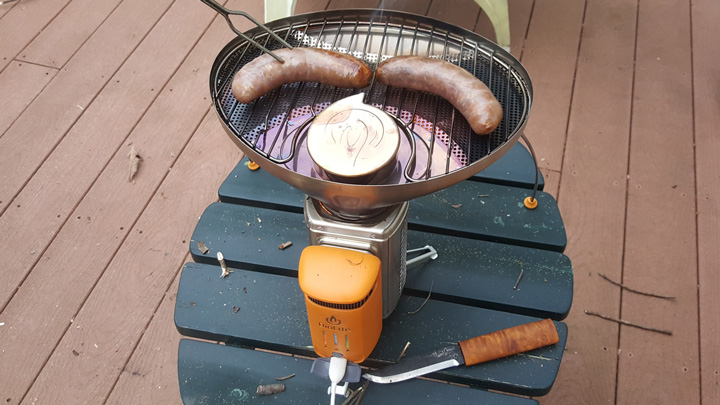
Before your next foray into the mountains, be sure to check out bioliteenergy.com for more information on the BioLite CampStove 2, as well as any of its accessories. MSRP: $149.95.
